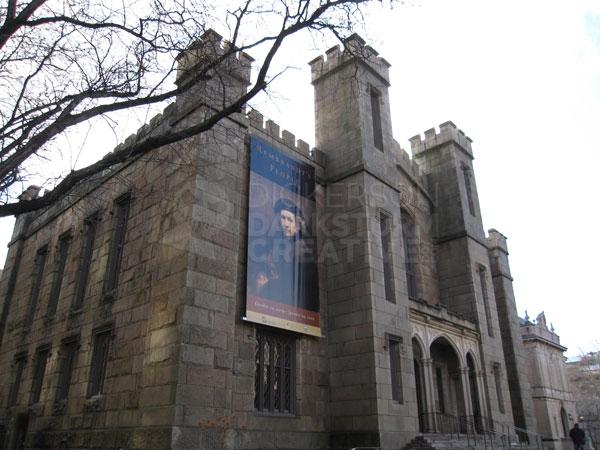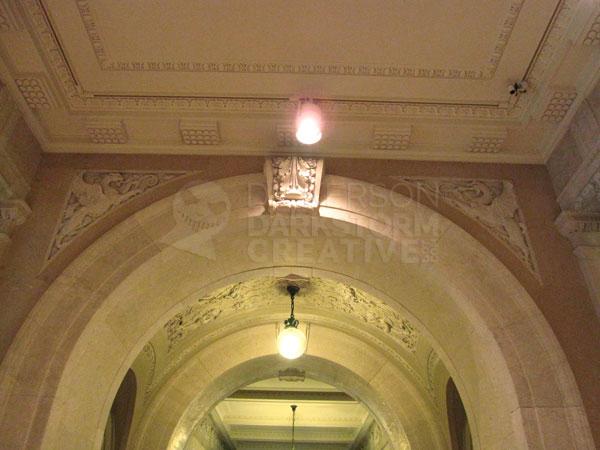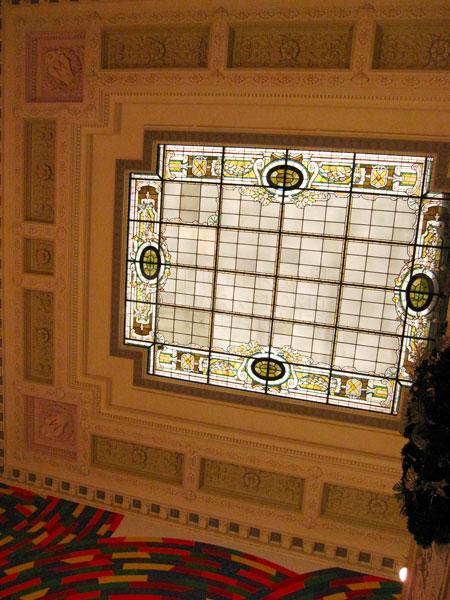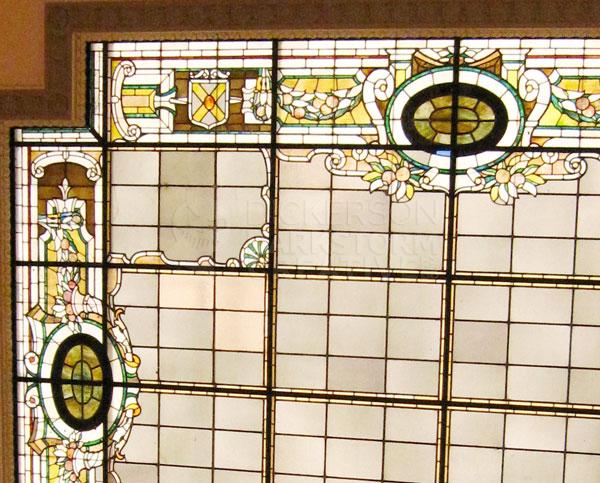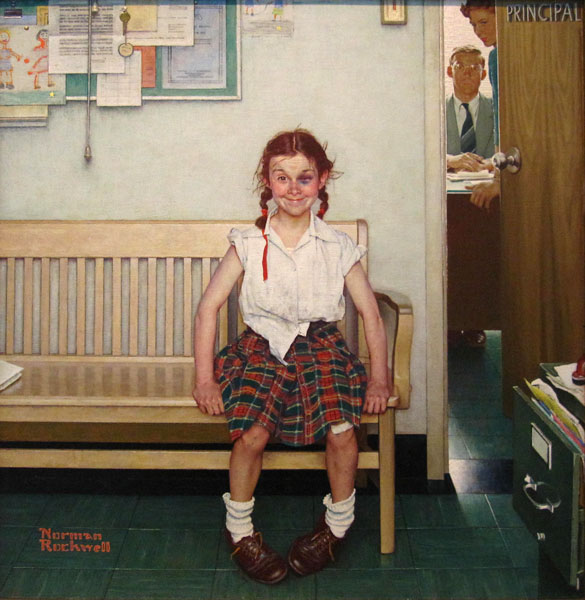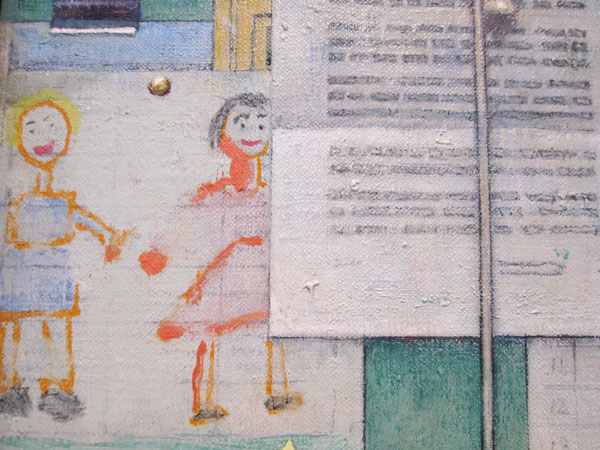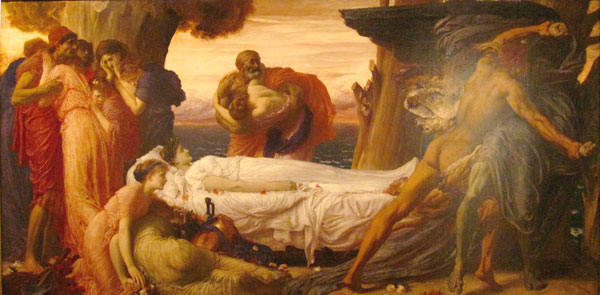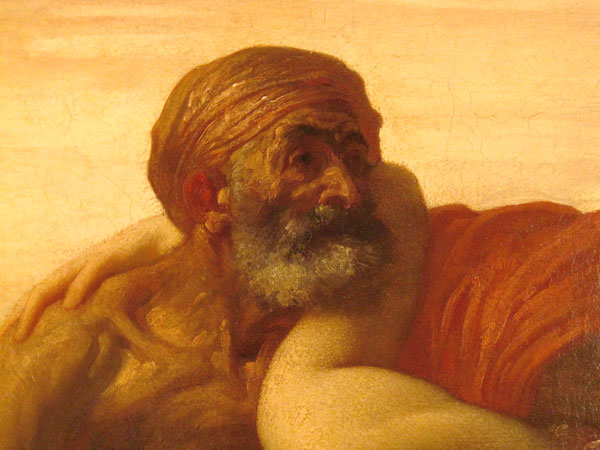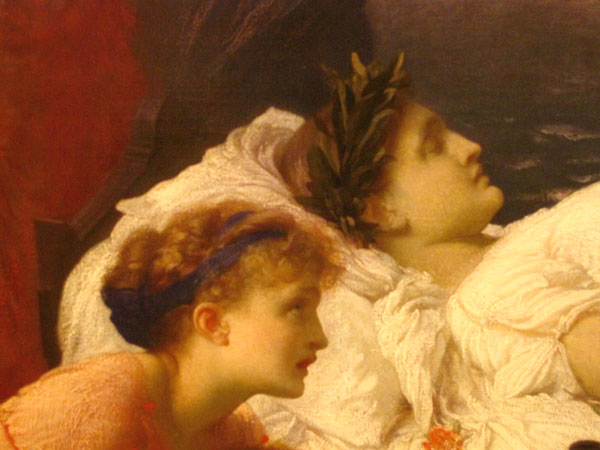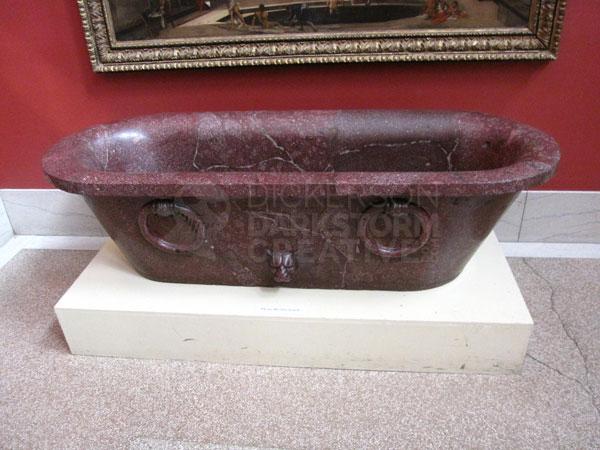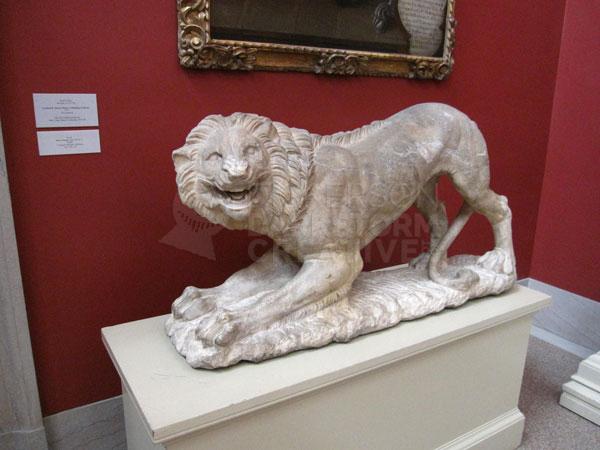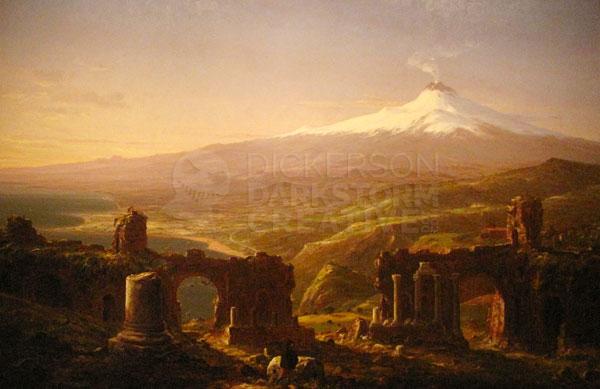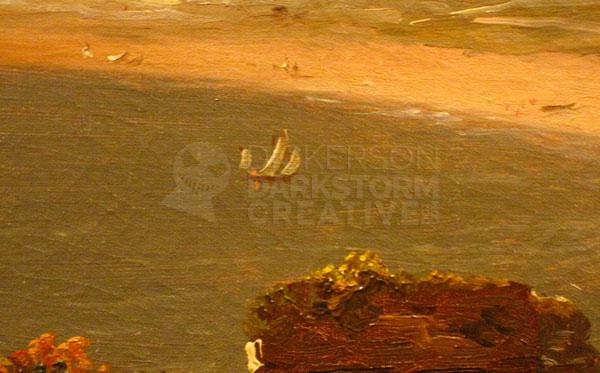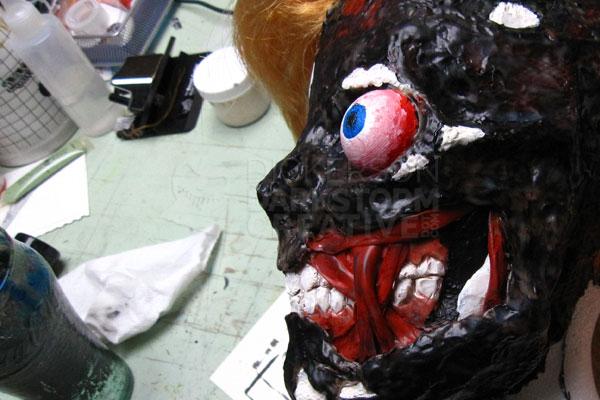I don’t often get to art museums, so I make the most of it when a chance comes up (save for the Denver Art Museum, which is only an hour away). I think, though books and the web can certainly show you art you’ve never seen before, that being in the museum in person gives you such a different view of things.
In this case, on the aforementioned trip to Hartford, Connecticut, I was lucky enough to get time to visit the Wadsworth Atheneum, a beautiful art museum with some wonderful works of art.
The building itself is a very imposing, castle-like structure from the front:
Just the exterior design is enough to get your attention, but inside is a beautiful, well designed museum. With wonderful turn-of-the-century architecture (1800’s-1900’s), and wonderful niche carvings throughout.
Within an interior hall you can see a nice ceiling stained glass, and overall you just get a sense of class from the building itself. Even before we get to the works of art inside.
One thing I might add, I always ask the front desk first about photography. Every museum is different, and each have their own rules with photography. No flash is almost always the case, but if you have a decent camera that can shoot without one (mine’s a Canon SD880) then you’re set.
I think the museums appreciate the question too, that you are willing to ask about the rules first before trudging ahead. I’ve had several nice conversations about art with docents and staff as well, even to the point that they will give you tips and pointers on which times are best for the more popular pieces.
Now, there were quite a few unique and beautiful pieces that I could mention, but don’t really have space. I intend to mention a few in the coming weeks, but for now here are a couple that for their own reasons are even better in person than on the web or in a book.
First up, and just sort of quietly hanging out on a simple wall, is this great Norman Rockwell piece, The Young Lady with the Shiner:
It’s a Rockwell that I’ve seen quite a few times, in quite a few books. But in person, Rockwell’s mastery is really evident. You get a sense of life from it, and of course the obvious sense of humor. You can also see far more vividly Rockwell’s techniques, which reproduce smaller in print and are harder to see:
I also came across another piece that I’d been thinking of doing an art blog on in the past. I could never find a large enough image to show on the site, but now I’ve seen it in person. This is Frederic Lord Leighton’s Hercules Wrestling With Death for the body of Alcestis:
What you don’t get from a book or the web is the sheer size of this work. Where the Rockwell isn’t too big at all, this piece is seven or eight feet wide and five feet tall. It’s a huge canvas, with immense detail, and one that gives you more of an idea of this scene happening in front of you than a small web image can show you.
You can also get a better sense of Leighton’s styles, where he changes them within the same picture to get different effects. In this case, you have a grizzled old man, with a strong, almost harsh brush:
But just beneath this rougher technique is a softer, more supple approach with the women. The technique here is soft enough to really contrast with both the old man above and the rough, textured fight to the right:
These are things that are more difficult to see in a book, not just the larger sense of a work but the imtricate details and techniques that really set an artist and their work apart from others.
Aside from the traditional arts, you also often find gems that you don’t expect. In this case, the images below might end up influencing my work far more than even the paintings above:
What caught me entering the museum was not just a painting by the Hudson River school, but an entire room dedicated to them. Thomas Cole especially has always been one of my favorites, and to see a whole room alone of just his art was fantastic. Here is Cole’s Mount Etna from Taormina, another painting that is huge:
What you miss, again, are the details. Cole almost lovingly added the smallest of details to the work. Where the overall composition is often Cole’s strength, it’s the details that show how much he loved his work:
In my own work, I often add things and situations that don’t necessarily add to the work. They are just details that I think are cool, that add something else to a work that others might not bother with. To stand in front of this 150 year-old painting, to see the individual paintstrokes of Cole’s love for his work, was worth the whole trip.
Opinions?
